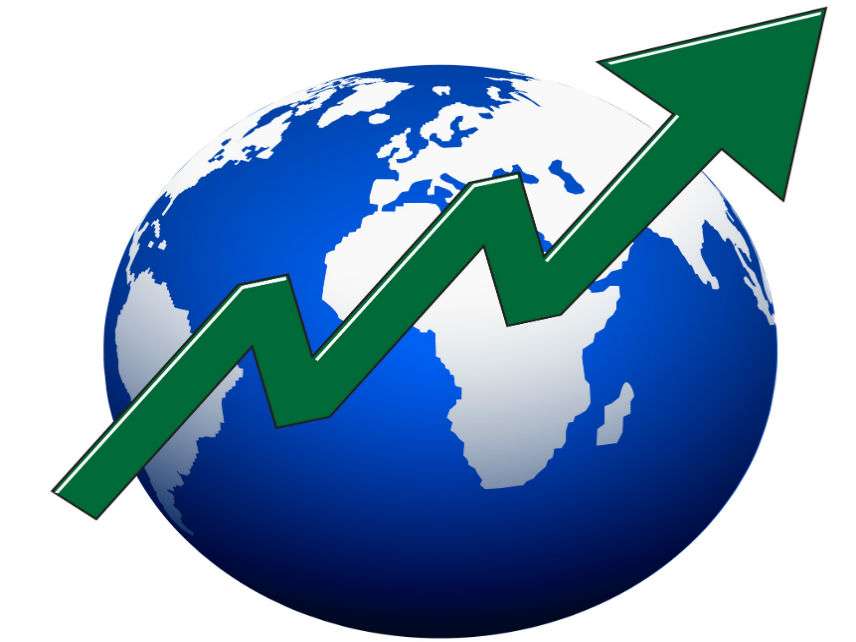The World Is Getting Better, Declare Op-Eds in Leading Newspapers
Doomslayer Julian Simon vindicated after 40 years.

The human prospect is better than ever, declared a spate of op-eds as 2019 started. All I can say is: Welcome to the real world—I'm glad you guys have caught up.
"The World Is Getting Quietly, Relentlessly Better," headlined The Wall Street Journal's economics commentator, Greg Ip. "Why 2018 Is the Best Year in Human History!" exclaimed New York Times columnist Nicholas Kristof. Washington Post columnist David Von Drehle warned: "Don't fall for the doomsday predictions." For economist Tim Harford in the Financial Times, the headline was "Why I predict we will be wealthier in the future."
As the author of The End of Doom: Environmental Renewal in the Twenty-First Century (2015), I'm glad to see these commentators embracing the state of mind that the great physician-statistician Hans Rosling called Factfulness.
Let's briefly review some of the facts about global trends that the four columnists highlight. At the Journal, Ip reports that "poverty around the world is plummeting; half the world is now middle class; and illiteracy, disease and deadly violence are receding." Indeed, the World Bank notes that the percentage of people living in extreme poverty rate—that is, living on less than $1.90—a day has fallen from 36 percent of the world in 1990 to 8.6 percent in 2018. The World Bank predicts that it will drop to just 3 percent by 2030.
To his credit, Times columnist Kristof devotes one column per year to detailing just how much better the world is becoming. In his latest, he points out that "Each day on average, about another 295,000 people around the world gained access to electricity for the first time….Every day, another 305,000 were able to access clean drinking water for the first time. And each day an additional 620,000 people were able to get online for the first time." He points out that global average life expectany is way up too. Average global life expectancy was just over 52 years in 1960; it has now increased to 72 years. In addition, the global literacy rate has risen from 69 percent in 1976 to 86 percent in 2016.
Citing the wonderful new Simon Abundance Index developed by Marian Tupy of the Cato Insitute and Gale L. Pooley of Brigham Young University–Hawaii, the Post's Von Drehle observes that natural resources are tending to become more abundant even as world population continues to rise. Measured by global average hourly income, the price of a representative basket of 50 key commodities—food, energy, minerals, and so forth—has fallen by nearly two-thirds since 1980. Measured by the time it takes to buy the basket, the Earth's resources have become 380 percent more abundant as the human population grew by 69 percent.
Finally, over at the Financial Times, Tim Harford forecasts that "we'll be five times richer in 2118 than we are today. That would put global income at around $80,000 per person—roughly twice the current average salary in the UK today—and income in the leading economies will be more than $250,000 per person per year in today's money." He further notes that "$250,000 a year in 2118 should buy wonders that could not be had today for any money."
To get some idea of what $250,000 in 2118 will buy compared to that sum today, he suggests thinking about what $70,000 (more than $2 million in today's dollars) in 1900 could buy you then compared to today. In 1900, $2 million could not buy you antibiotics, a home refrigerator, an air conditioner, a movie in a cinema, a radio, a television, a computer, a smartphone, or internet access. A three-minute long-distance telephone call cost the equivalent of nearly $40 a minute. Just over 4,000 automobiles were manufactured that year; a gasoline-powered open canopy Duryea Runabout sporting a 15 horsepower motor cost $1,750—or $51,000 in today's dollars.
Ip, Kristof, Von Drehle, and Harford are following the analytical path pioneered by the late University of Maryland economist Julian Simon. The Simon Abundance Index is well-named after "doomslayer" Simon. As Simon once explained, he initially believed the dire predictions of coming civilizational collapse due to "overpopulation" and the imminent depletion of non-renewable resources. But his dogged pursuit of the data persuaded him that those apocalyptic forecasts were wrong.
The result was the publication of the brilliant The Ulimate Resource in 1981 and the magisterial The Resourceful Earth, co-authored with Herman Kahn, in 1984. These volumes made the case that human ingenuity operating under the rule of law in free markets will increase resources and generate the wealth that enables humanity to ameliorate environmental problems over time.
In his 1991 edited volume, The State of Humanity, Simon declared, "This is my long-run forecast in brief: The material conditions of life will continue to get better for most people, in most countries, most of the time, indefinitely. Within a century or two, all nations and most of humanity will be at or above today's Western living standards. I also speculate, however, that many people will continue to think and say that the conditions of life are getting worse."
If Harford is right—and he likely is—then Simon's forecast about humanity's future material prosperity will turn out to be too modest.
Disclosure: I read Simon's work in the 1980s and met him in 1990. He has been a major inspiration for my reporting for more than three decades. In my 1990 Forbes article on Paul Ehrlich's failing population doom predictions, "Doomsday rescheduled," I reported: "University of Maryland economist Julian Simon has tangled more than once with Ehrlich. He comments, 'Every prediction that Ehrlich made has been proved wrong. Is there any reason to believe him now?'"

Show Comments (63)